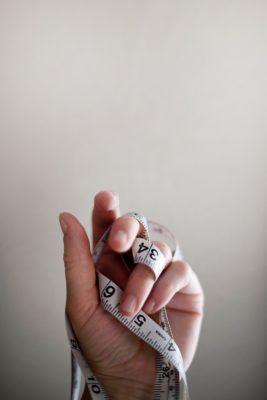BMI: The Skinny on Body Mass Index
When it comes to self-measurement tools to determine a healthy weight, possibly the most popular—or at least one of the most talked about—is body mass index (BMI). But if you take any time at all researching BMI, you can easily get lost in a rabbit hole of positives and negatives. Context is key. Standard BMI measurements are meant to be a general tool. They should not be taken as a one-stop result for individual people.
Let’s try to cut through some of that noise and figure out why it seems to be so controversial, and yet so widely relied upon.

Simply put, BMI is a number based on your weight in relation to how tall you are. There are a couple ways to find your BMI. You can use a body mass index formula, or you can just use one of the many online calculators.
BMI Formula
BMI = weight / (height X height) X 703, using pounds and inches
BMI Interpreted, Adults 20 Years and Older
| Below 18.5 | Underweight |
| 18.5 – 24.9 | Normal |
| 25 – 29.9 | Overweight |
| 30 and Above | Obese |
Source: Center for Disease Control and Prevention
BMI as a Measurement Tool
BMI is an easy and inexpensive measurement tool. It has been found to work well in measuring obesity rates in a general population. For instance, when you see reports from organizations such as the Centers for Disease Control and Prevention (CDC) or the World Health Organization discussing obesity rates, they use BMI for their baseline statistical analysis.
Using BMI gives health-care professionals and researchers a way to gather the data that allows them to measure dietary trends, obesity rates, and the health risks that have been found to be associated with a higher BMI. In general, a higher BMI increases the risk of developing a range of conditions linked with excess weight.
BMI Shortcomings
While you can use your BMI as a starting point to determining where you might need to improve health wise, BMI itself is not an indicator of your individual health. It’s important to keep in mind BMI does not scale for physical characteristics or differentiate between muscle and fat—it only measures your complete mass.
Let’s take, for example, a 5 ft. 10 in. male who weighs 170 pounds. The chart would show a BMI of 24.4 and he would be in the normal range. But what does that actually mean? If that person has a slender build, he may actually have higher than normal body fat and could be classified as normal weight obese .
Especially if he does not exercise regularly, smokes, or has a family history of cardiovascular disease.
With that in mind, a man of the same height who weighs 10 pounds more would be considered overweight with a BMI of 25.8. But he may be healthier if he eats well, exercises, and is a non-smoker. Or he may simply have a larger build.
Other Measurements
If you have a high muscle mass or are especially fit or athletic, you could be classified as overweight or obese. But you’re not alone.
There are millions of people out there who do not fall into the preset categories or body types scored by a BMI, and you might be better served by another form of measurement.
There are a few different ways to measure your body fat, but the most commonly utilized and accessible are waist circumference and skinfold thickness measurements.
Waist Circumference
When combined with your BMI, this is probably the easiest self-assessment technique. All you need is a measuring tape. Find the halfway point between the top of your hip bone and the bottom of your ribs (close to the top of your bellybutton), breath out normally, and then wrap the tape around your waist to check your measurement. If your waist size is over about 37 in. (for men) or 31.5 in. (for women), you may be at higher risk for weight-related health issues.
Skinfold Thickness
With skinfold thickness measurement, you’ll use a special set of calipers to pinch and measure the fat beneath the skin in several different areas of the body. You can do this yourself because this technique is easy and doesn’t require a lot of specialty equipment, but it isn’t extremely accurate as a self-assessment. Your results may vary—unless you’re able to measure the exact same spot every time—so you may want to make an appointment with a personal trainer to help you out with this.

Take an Overall Approach
Don’t obsess over your BMI score. While it is great for statistical analysis over a large population, the best approach for you as an individual is to focus on overall health. Use your BMI as one self-assessment tool, in concert with what you see on the scale, skinfold, or waist circumference, and how easily you’re able to perform a simple exercise like taking an extended walk or light jogging.
And regardless of your measurements, you should always keep the benefits of a healthy lifestyle in mind. If you and your medical health professional determine that managing your weight—or even losing a few pounds, cutting inches, or dropping digits off your BMI—is right for you, start with these tips:
- Cut your sugar intake and embrace healthy eating
- Eating healthier is easier with a plan. Develop a menu and shopping list and stick to it. Choose a variety of nutrient-rich foods, including fruits, vegetables, and whole grains. And small amounts of energy-dense foods like olive oil and nuts.

- Eating healthier is easier with a plan. Develop a menu and shopping list and stick to it. Choose a variety of nutrient-rich foods, including fruits, vegetables, and whole grains. And small amounts of energy-dense foods like olive oil and nuts.
- Exercise
- Ask your doctor about the right type of activities for you. Remember, even small amounts of activity can provide immediate benefits.
- Stay hydrated
- Not all drinks are created equal. Staying hydrated with water is paramount in weight loss and weight management. Avoid sugary drinks and limit alcohol consumption.
- Get plenty of sleep
- Not only does a full night’s sleep help you feel refreshed, getting to bed early and sleeping longer may be associated with a lower BMI. We should all take a nap, for our health.

If you need help getting started with a plan, there are many lifestyle and wellness tips and recipe ideas here on What’s Up, USANA? You can even check out which foods are the worst for your waistline at Ask the Scientists.

Leave a Reply
Want to join the discussion?Feel free to contribute!